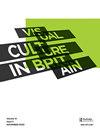Bet Low: An Active Career
Q2 Arts and Humanities
引用次数: 0
Abstract
Bet Low’s early work captured city scenes and people, before she turned her attention to landscape painting. Low then developed a uniquely figurative style, visually reducing landscape into key elements. Running concurrently with her artistic practice, Low’s early experience at Glasgow Unity Theatre and involvement in artist-led groups led to her co-founding the New Charing Cross Gallery (1963–8).Although she was an independent artist actively working outside any institutional context, Low did not consider herself ‘unknown’. This article therefore considers the visibility of her practice, concluding with a consideration of her critical legacy.低赌注:积极的职业生涯
贝特·洛的早期作品捕捉了城市场景和人物,之后她将注意力转向了风景画。然后,洛发展了一种独特的具象风格,在视觉上将景观减少到关键元素。与她的艺术实践同时,刘女士在格拉斯哥联合剧院的早期经历和参与艺术家领导的团体使她与人共同创立了新查林十字画廊(1963-8)。虽然她是一个独立的艺术家,活跃在任何机构之外,但她并不认为自己是“未知的”。因此,本文考虑了她的实践的可见性,最后考虑了她的批评遗产。
本文章由计算机程序翻译,如有差异,请以英文原文为准。
求助全文
约1分钟内获得全文
求助全文
来源期刊

Visual Culture in Britain
Arts and Humanities-Visual Arts and Performing Arts
CiteScore
0.60
自引率
0.00%
发文量
1
 求助内容:
求助内容: 应助结果提醒方式:
应助结果提醒方式:


